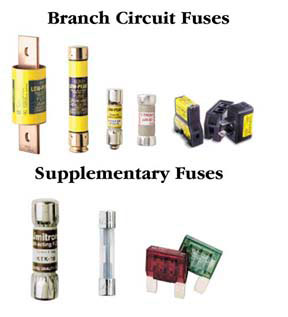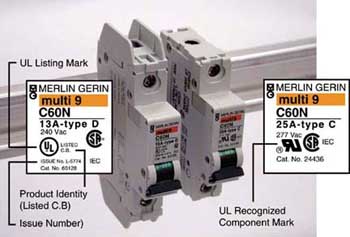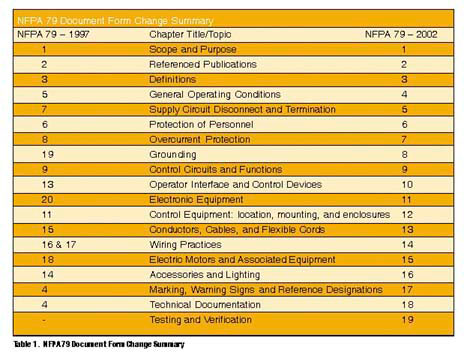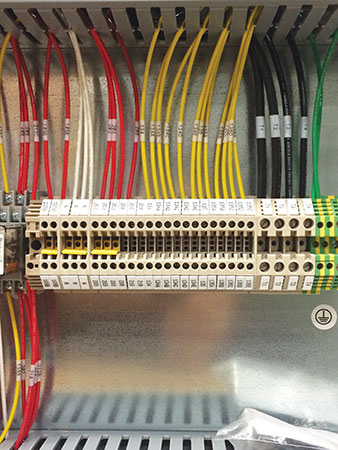NFPA 79, the Electrical Standard for Industrial Machinery 2002 edition, is scheduled to be published in October 2002. During this past cycle, NFPA 79 has undergone a major overhaul in an effort to harmonize requirements with those of IEC 60204. This, as you can imagine, was a major undertaking and resulted in a heavy workload. The work pioneered by the NFPA 79 technical committee has provided a benchmark for future harmonization efforts. This article will discuss the harmonization process that took place and resulting changes to the NFPA 79 standard. In addition, significant changes that occurred during the 2002 cycle will be discussed individually.

Photo 1. Example of internal, permanently lockable handle
In March 1998, the NFPA 79 committee prepared a statement of work. The major elements of the statement of work are:
Harmonization—Purpose
As the users and the manufacturers of industrial machines move toward a global manufacturing community, the need for a harmonized standard affecting industrial machinery becomes an economic necessity. Generally, large users and manufacturers find regulations burdensome. However, multiple regulations as well as conflicting regulations are an economic disincentive to global expansion. In order to ease the burden of differing regulation, and at the same time maintain the high standard of electrical machine safety, the NFPA 79 committee has expressed their desire, through balloted vote, to harmonize NFPA 79 with IEC 60204-1.
Importance of Issue—Harmonization
Today’s industrial machines are very complex and expensive. As manufacturing lines become modular and transportable, industrial machines originally produced for a foreign market may quickly be transported to the domestic market. The reverse is also true. Differing electrical standards add a large cost to multinational manufacturers as they build, and sometimes move, manufacturing facilities.
Harmonization—Objective
This work is necessary to accomplish the goal of allowing industry to economically build one industrial machine capable of passing a detailed electrical safety inspection using either IEC 60204-1 or NFPA 79 standard. Both the NEC Technical Correlating Committee (TCC) and the Standards Council reviewed the statement of work in July 1998. The TCC unanimously recommended the following action to the Standards Council:
“The Technical Correlating Committee agrees with the efforts of the NFPA 79 committee to harmonize the technical requirements of NFPA 79 and IEC 60204, where feasible and where in concert with the NEC and its related codes and standards”
Result
The NFPA Standards Council considered and concurred with the recommendation. In June 1999, the NFPA 79 committee formed 20 task groups. Each task group was assigned one proposed new clause. The task group compared NFPA 79–1997, Clause X with IEC 60204-1 Clause X. The task group presented its work to the entire committee on several occasions for review and comment. The task group chair then submitted the work as a proposal to amend NFPA 79–1997.
One of the major revisions that occurred as a result of harmonization was the reorganization of the document chapters to match the IEC 60204 layout. The intent was to increase the usability of the document and align similar requirements. As a result, the majority of the clauses in the 1997 edition of NFPA 79 have moved to align with IEC 60204. Table 1 provides a summary of the chapter relocations.
Significant changes, in addition to the changes resulting from harmonization, occurred during the past cycle. Many of the changes were editorial to update the document to comply with the NFPA Manual of Style. However, some significant technical changes occurred in the NFPA 79 standard this past cycle. An overview of the significant changes is provided here:
Chapter 4: General Operating Conditions.
Chapter 4, specifically 4.3.1 and 4.4.1, was revised to clarify the allowance for operation of electrical equipment outside those conditions specified in chapter 4 with the use of an agreement between the user and supplier. A note, referencing Annex B, was added. The new Annex B contains a sample inquiry form, which can be supplied by the user to provide the supplier of the machinery sufficient information for the proper design, application, and utilization of the electrical equipment of the machine.
5.3.3.1 Supply Circuit Disconnecting
Means Requirements.
New requirements for supply circuit disconnecting means were added in section 5.3.3.1(3) & (5) and state:
“5.3.3.1 Requirements…(3) Be provided with a permanent means permitting it to be locked in the off (open) position only (e.g., by padlocks) independent of the door position. When so locked, remote as well as local closing shall be prevented.…(5) Be operable, by qualified persons, independent of the door position without the use of accessory tools or devices.”
These new requirements pertain to devices used as the supply circuit disconnecting means, which utilize a door-mounted handle. The new requirements mandate the use of an internal, permanently lockable handle in addition to the external door-mounted handle (see photo 1). These requirements were added to cover a safety concern with loss of control of the disconnecting means operating mechanism when the door is opened and the external handle swings away. The added requirements provide a solution to this concern while allowing the use of these disconnects.
7.2.1 Overcurrent Protection—General.
A new sentence and note were added to the general overcurrent protection requirements regarding the proper use of overcurrent protective devices. The new sentence states:
“7.2.1 General. Supplementary overcurrent protective devices shall not be used as a substitute for branch circuit overcurrent protective devices…”
This clarifies that branch-circuit overcurrent protection is required for protection of industrial machinery circuits. These supplemental overcurrent protective devices are not suitable for branch-circuit protection and cannot be used for this purpose. Supplemental overcurrent devices are intended to be used as a component of an end product. They are offered in a wide variety of performance characteristics, voltage ratings, and interrupting ratings; and, therefore, each supplemental overcurrent protective device is only allowed to be used under specific conditions. The use of supplemental overcurrent protective devices in replacement of branch-circuit protection creates an unsafe installation. Accompanying the new sentence was the addition of a note in Annex A. Note A.7.2.1, provides background information and a list of different types of supplemental overcurrent protective devices and how to identify them.
“How can I tell if a device is a branch-circuit overcurrent protective device?”

Photo 2. Examples of branch circuit and supplementary fuses
Review of the device labeling will be required to assure the proper device is being used to provide branch-circuit protection. NEC 240.6 provides a list of devices which are suitable for protection of branch circuits. This includes inverse time circuit breakers and fuses. In addition, NEC 430.52 provides a list of devices which are suitable for short-circuit and ground-fault protection of motor branch circuits. Fuses suitable for branch-circuit protection include Classes L, R, J, T, CC, G, H, K5, and plug fuses. Popular supplementary fuses include midget, glass tube, and miniature types (see photo 2).
Circuit breakers suitable for branch-circuit protection will be listed and marked circuit breaker. Supplemental protectors, often referred to as mini circuit breakers, are recognized components rather than listed devices (see photo 3).
9.2.4 Overriding Safeguards.

Photo 3. Listed circuit breaker and supplementary protector.
A new requirement was added for control circuits used in the suspension of a safeguard. The requirement states:
“9.2.4 Overriding Safeguards. The control circuit for the suspension of a safeguard shall have the same safety requirements as the suspended safeguard itself.”
A system fault in the suspension of the safeguard can lead to hazardous conditions. Therefore, the control circuit for the suspension of a safeguard must be treated like the suspended device itself to provide the same level of safety as the safeguard itself.
9.3.6 Protective Interlock.
This section was revised to clarify the types of switches allowed for use in protective interlock circuits. The new requirement states:
“9.3.6 Protective Interlock. Where doors or guards have interlocked switches used in circuits with safety-related functions, the interlocking devices shall be listed safety switches, have either positive (direct) opening operation or provide similar reliability and prevent the operation of the equipment when the doors are open (difficult to defeat or bypass).”
The term listed safety switch was added to restrict devices, such as limit switches, which are easily defeatable. Listed safety switches, as required in 9.3.6, refer to switches used in door and guard interlock circuits which are listed for this purpose and not easily defeatable. Concern over the new wording listed safety switches was voiced through public comments received during the Report On Comments (ROC) phase of the cycle. The committee voiced its intent that the new wording is not intended to require UL 98 fusible and nonfusible switches, which are commonly referred to in the industry as “safety switches.” The desired level of performance requirements, positive-opening contacts, for these listed safety switches were added to clarify the intent of this requirement.
9.4.3 Control Systems Incorporating Software and Firmware Based Controllers.
This is a new requirement for control systems incorporating software and firmware based controllers. The origin of this requirement is IEC 60204. This section relocated from 11.3.4 during the comment stage to separate the system requirements, which are appropriate in Chapter 9, from the component requirements, which are appropriate in Chapter 11. The requirement is as follows:
“9.4.3 Control Systems Incorporating Software and Firmware Based Controllers. Control systems incorporating software and firmware based controllers performing safety-related functions shall:
(1) In the event of any single failure perform as follows:
a. Lead to the shutdown of the system in a safe state
b. Prevent subsequent operation until the component failure has been corrected
c. Prevent unintended startup of equipment upon correction of the failure,
(2) Provide protection equivalent to that of control systems incorporating hardwired/hardware components, and
(3) Be designed in conformance with an approved standard that provides requirements for such systems.”
This change provides a list of requirements for control systems incorporating software and firmware based controllers. In addition, this section now requires compliance with an appropriate application standard. Note A.9.4.3 provides a link to IEC 61508 which provides requirements for this control system design.
11.3.4 Programmable Equipment—Use in Safety-related Functions.
This is a new requirement for programmable equipment used in safety-related functions. The origin of this requirement is IEC 60204.The new requirement reads:
“11.3.4 Use in Safety-Related Functions. Software and firmware-based controllers to be used in safety-related functions shall be listed for such use.”
This section was revised to require listing of software and firmware based controllers used in safety-related functions.
Table 13.5 Conductor Ampacity.

Table 1. Table 1 provides a summary of the chapter relocations
Allowable ampacity of conductors in Table 13.5 was revised from Table 4 NFPA 79–1997. The revision removed the fourth column in Table 4, titled “Control Enclosure,” which contained ampacities from the first column in NEC Table 310.17 for conductors in open air. This change now restricts application of conductors to ampacities similar to the 75°C column in NEC Table 310.16. The reason for the change relates to the fact that nearly all devices are now rated for connection to 75°C conductors applied at ampacities in NEC Table 310.16.
13.5.2 Ampacity Adjustment.
This section contains a new requirement clarifying proper ampacity adjustment for 90°C insulated conductors used on industrial machinery. The new requirement states:
“13.5.2 Ampacity adjustment for 90 degree C insulated conductors ampacities shall be based upon the ampacities in the 75 degree C column of Table 13.5.”
This requires 75°C ampacities to be used for ampacity adjustments for 90°C insulated conductors.
13.6.1 Conductor Sizing.
A significant change to NFPA 79 is revision to 13.6.1 permitting the use of 16 and 18 AWG conductors in small branch-circuit applications. The change keeps 14 AWG as the minimum recommended conductor size with the allowance for the use of 16 and 18 AWG conductors under the specified conditions. A sample of 13.6.1 is shown here:
“13.6.1 Conductors shall not be smaller than 14 AWG for power circuits unless otherwise permitted in (a) or (b).
(a) 16 AWG shall be permitted, if part of a jacketed multiconductor cable assembly or flexible cord, or individual conductors used in a cabinet or enclosure, under the following conditions:
(1) Non-motor power circuits of 8 amperes or less provided all the following conditions are met:
(a) Circuit is protected in accordance with Clause 7
(b) Overcurrent protection does not exceed 10 amperes
(c) Overcurrent protection is provided by one of the following:
(1) A branch circuit rated circuit breaker listed and marked for use with 16 AWG wire
(2) Branch circuit rated fuses listed and marked for use with 16 AWG wire
(3) Class CC, Class J, or Class T fuses…”
Notice this allowance is limited to certain requirements including: limited ampacity circuits, specific overcurrent protective devices, and limits for exposure to physical damage. An extensive investigation including engineering analysis and laboratory testing were used to substantiate the change.
14.1.4 Cables.
Several new sections were developed to recognize and regulate the use of cables. The type, size, and ampacity of the cable assembly are determined by applying the requirements of Clause 13. Clause 14 is intended to ensure that cables are installed in such a manner to minimize the potential for physical damage. Another new section, 14.5.11, specifically recognizes the uses of cable tray as a support method.
16.1.2 Receptacles.
Worker safety is enhanced through a new requirement that applies to maintenance receptacles.
“16.1.2 Receptacles, which are part of the industrial machine, either external or internal to the control cabinet and intended for use by maintenance personnel, shall have ground-fault circuit-interrupter protection for personnel.”
In addition, Section 16.1.2 requires that work lights be protected by Class A type ground-fault circuit interrupter if used in wet locations.
19.1 Testing and Verification—General.
This important new clause requires testing to ensure that the machine has an effective ground-fault current path. Industrial machines are permitted to utilize the machine frame as an equipment grounding conductor. Typically, all tests will be done in the factory. However, if the machine is manufactured in sections and assembled on the site, the continuity of the equipment grounding conductor will be verified after assembly. Section 19.2 stipulates that one of the two proscribed test methods shall be used to verify equipment-grounding continuity. In addition, re-testing is required by Section 19.7 on portions of a machine that have been changed or modified.
Tom wishes to thank the chair of NFPA 79, Mike Callanan, and the NFPA 79 staff liaison, Joe Sheehan. The successful completion of this project is founded on your energy, patience, and expert guidance.










Find Us on Socials